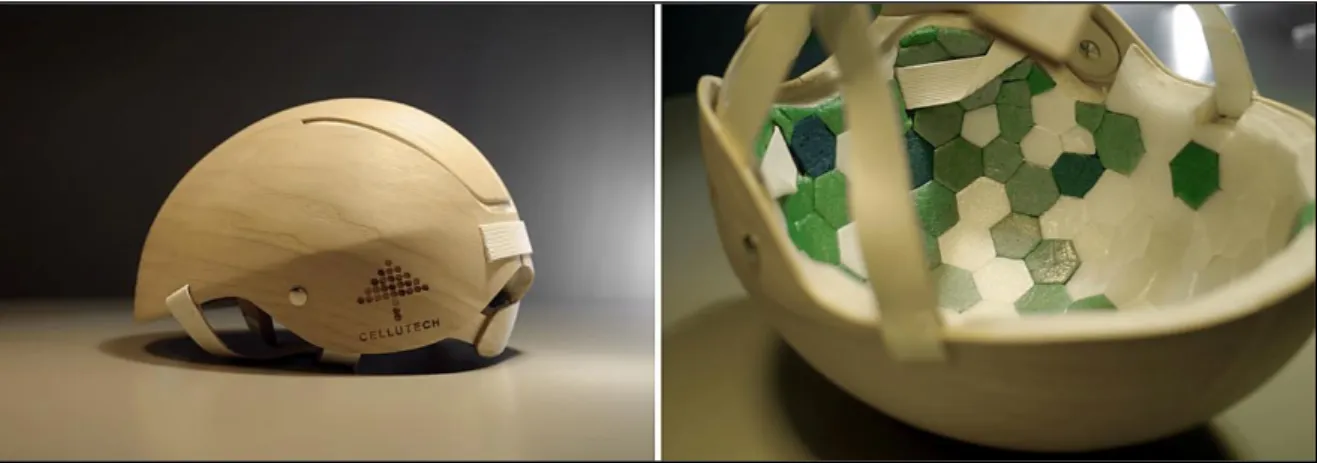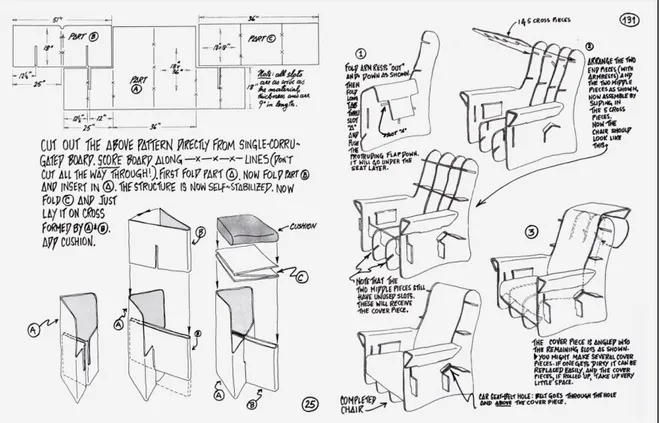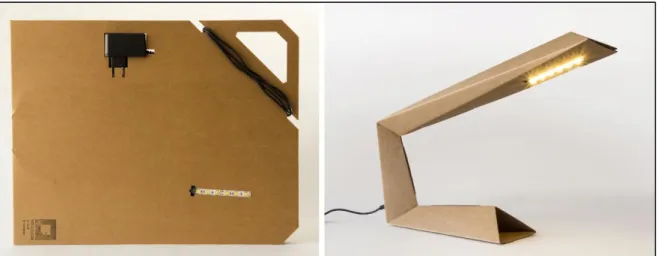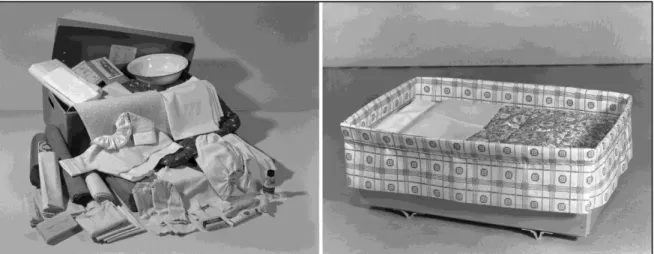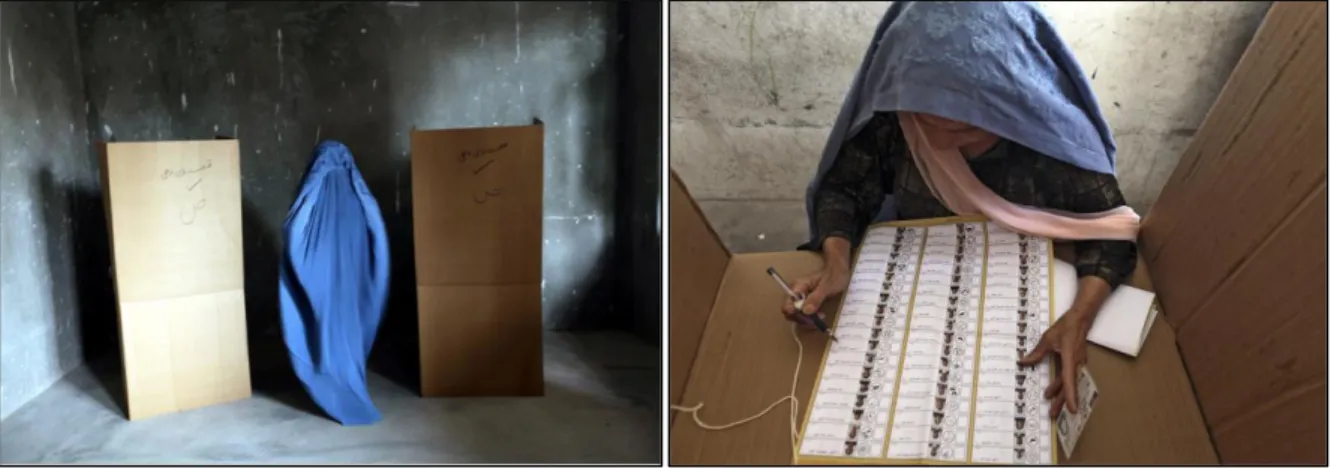An International Journal for All Aspects of Design
ISSN: 1460-6925 (Print) 1756-3062 (Online) Journal homepage: http://www.tandfonline.com/loi/rfdj20
Democratic Cardboard. Materials and design for a
sustainable society
Davide Turrini
To cite this article: Davide Turrini (2017) Democratic Cardboard. Materials and design for a sustainable society, The Design Journal, 20:sup1, S1682-S1691
To link to this article: http://dx.doi.org/10.1080/14606925.2017.1352691
© 2017 The Author(s). Published by Informa UK Limited, trading as Taylor & Francis Group
Published online: 06 Sep 2017.
Submit your article to this journal
View related articles
Design for Next 12th EAD Conference Sapienza University of Rome
12-14 April 2017 doi: 10.1080/14606925.2017.1352691
© 2017 The Author(s). Published by Informa UK Limited, trading as Taylor & Francis Group. This is an Open Access article distributed under
the terms of the Creative Commons Attribution License (http://creativecommons.org/licenses/by/4.0/), which permits unrestricted use, distribution, and reproduction in any medium, provided the original work is properly cited.
Democratic Cardboard.
Materials and design for a sustainable society
Davide Turrini
a*aUniversity of Ferrara
*Corresponding author email: [email protected]
Abstract: In a blend of playful provocation, radical protest and early
ecological awareness, cardboard design developed between the 1960s and
the 1990s as a frugal alternative to the aesthetics and materials of
modernity and post-modernity. In the third millennium this conveys
important messages connected to the sustainability of productive
processes. In most cases, designing and making cardboard objects means
activating short and circular production chains, where the authorship of
the project not overpowers the functional and participatory value of the
program. Through structural forms, simply made by folding or layering, the
ecological advantage of the material, today obtained by recycling waste or
from the controlled use of natural resources, is increased by light
techniques that are mostly reversible. Thus cardboard becomes a
metaphor for sustainability and, thanks to its inherent suitability for
educational purposes, is a preferred instrument for raising awareness and
activating responsibility with regard to environmental and social issues.
Keywords: Cardboard, Ecodesign, Sharing, Resilience, Sustainability
1. Cyclic regeneration and material design processes
In modern times, items made of paper or cardboard have been seen as being cheap and transitory. With the exception of graphic supports destined to last, materials containing cellulose fibre have spread throughout man’s everyday life, but almost always with a view to immediate consumption and, frequently, in direct association with an idea of exploitation damaging to the environment and to natural raw materials.
Today however, the perception of these products has changed.
In general, a complete rethink of the concept of rapid product transience has been developed over time: cheapness, absence of maintenance, and indifference to the sense of possession, of which easily and quickly consumable items are paradigmatic, are perceived increasingly as values. Moreover, a certain prejudice in relation to disposable goods, linked to the lack of quality, consumerism and non-sustainability, have been overturned by new environmental and social awareness and by unprecedented production practices, use, recycling and reuse (Manzini, 1990, pp. 175-179; De Fusco, 2012, pp. 65-71).
In particular, since the 1990s, the paper industry has taken up the challenge of sustainability with regard to its products throughout their whole lifecycle, gradually increasing the use of
pulping from waste and certifying the production process and materials, obtaining Ecolabel brands. In Italy, for instance, the paper sector now uses 80% of recycled secondary fibres, easily exceeding the use of new fibres, all of which come anyway from forests cultivated in compliance with highly sustainable protocols. This result is due, on one hand, to greater awareness and responsibility among residents and administrations on the matter of waste and, on the other, to an increasingly widespread and efficient collection service.
According to the 21st Paper and cardboard collection, recycling and recovery report for 2015,
published by COMIECO – the National Consortium for the Recovery and Recycling of Cellulose Based Packaging, every Italian separately collected an average of over 51 kg of paper and cardboard, with peaks of 62 kg in the central regions of Italy.
The benefits of these good practices are economic, with returns to the community through direct disbursement to local authorities, but there are environmental benefits too.
Thanks to recycling, the over three million tons of paper and cardboard collected in 2015 have prevented the release of three million tons of carbon dioxide into the atmosphere; while the net balance of benefits for the national community, deriving from the implementation of separate waste collection from 1999 until 2015 with the recycling of cellulose products, amounts to over five billion euros (21st Report, 2016, pp. 6-9/36).
The situation is positive on a European scale too. According to the Paper recycling. Monitoring
report 2015, drawn up by the ERPC - European Recovered Paper Council, the rate of paper and
cardboard collection and recycling in Europe has reached 71.5 %, exceeding by 1.5% the targets set by the 3rd European Declaration on Paper Recycling for 2010-2015 (Paper recycling,
2016, pp. 3-4).
These are consistent and particularly virtuous figures, which stand out even more in a global setting of environmental commitments, many of which have not been fulfilled.
The picture described thus far is emblematic of a circular economy distinguished by an extension of value, an expansion of job opportunities, and environmental benefits deriving from a widespread and consistent rethink of paper products and processes in terms of eco-design and systemic eco-design. An action that has been particularly strategic to this change has concerned the range of materials, updated and expanded in recent decades with products obtained largely from recycling, with the implementation of innovative material design processes (laser cutting, reversible stratification, eco-friendly flame-proofing or waterproofing treatments, etc.). The huge current production spans from traditional common, artistic and printing papers, to different types of card for special uses, and to stiff, fibrous or corrugated cardboard. These are joined by honeycomb cardboard and by cardboard tubes, 3D forms with high levels of structural strength (Costruire con il cartone, 2012, pp. 48).
Figure 1. Rasmus Malbert, cycling helmet consisting of a strong wooden shell and nano-cellulose foam cushioning. Made by Cellutech AB, 2015. Overall view and inner detail.
DEMOCRATIC CARDBOARD. Materials and design for a sustainable society
Figure 2. Micro-fibrillate cellulose food boxes with RFID tag printed on cardboard to communicate dietary properties to smart devices. Made by Stora Enso, 2016. Overall view and detail.
New performance frontiers are reached by micro-fibrillate or nano-crystalline celluloses guaranteed to be light, waterproof, chemically and thermally stable, in numerous fields of application, while other by-products of wood, configured through pressing, extrusion or injection, can compete, in terms of strength and durability, with traditional plastics. When the durability challenge isn’t won in relation to the effective life of the individual product, it is definitely successful when it comes to the cycle of long and repeated
regeneration (according to the latest figures from CEPI – the Confederation of European Paper Industries, in Europe, paper fibres are reused 3.5 times on average) or to an increasingly inclusive material palingenesis which now, in addition to tree cellulose, includes coffee and vegetable residues, nut shells, milk and animal skins among its raw materials (The age of fibre, 2016, pp. 8-19).
Consequently, the expansion and innovation of the range of materials, while defending the competitiveness of cellulose products, makes it possible to achieve new performance and expressive goals, feeding a sustainable creative and productive universe which is light, flexible and user-friendly, presented articulately in the furnishing, architecture, packaging and
corporate design sectors, along with those of publishing, edutainment design and social design.
2. Product design and new value ecologies
The use of cardboard to make objects and furnishings dates back to the 1960s and developed as a more or less explicit expression of criticism of a capitalistic model and of the industrial manufacturing system, with projects by designers such as Peter Murdoch, Bernard Holdaway, Riki Watanabe and Frank O. Gehry.
Amidst playful provocation, radical contestation and the first ecological petitions, design in cardboard was developed between the Seventies and the Nineties, as a frugal alternative to the aesthetics and materials of Modernity and Post-modernity (Leblois, 2008, pp. 58 et seq.); it subsequently entered the third millennium with a configurative universe which, despite not being immune to the “myths” generated by fashion and by the market, carries important meanings linked to the sustainability of production processes. In most cases in fact, designing and creating objects made of cardboard means activating short and circular production chains, with a low impact and competitive costs, aimed at aware use and recycling, where the value of the authorial nature of design does not overwhelm the functional and participative value of the programme (Turrini, 2014, pp. 110-120).
Products created in this context, often with a variable arrangement to optimise dimensions during transport and storage, to adapt to the use or to express several functions, are ideal to make up customised habitats in which to perform activities that are temporary or
characterised by varying degrees of permanence. This design is based on total-cardboard structural frames, made with simple folds, joints or layering, eliminating or minimising the use of glue and guaranteeing the possibility to dismantle and recycle the parts. So the ecological virtue of a material obtained, as we have seen, from the regeneration of waste or the
controlled use of natural resources, is strengthened by light and largely reversible construction techniques. Configured in this way, cardboard carries a metaphor which is more sustainable than ever, and thanks to a connatural pedagogical attitude (after all, early experimented by Josef Albers at the Bauhaus), it becomes a priority tool to activate and introduce new
awareness in relation to the themes of environmental and social responsibility (Turrini, 2014, pp. 120-125).
In conclusion, the design that stimulates our interest, and which we intend to look at here, is practical and visionary, local and global, essential in its configuration but rich and complex in its significance, all at the same time, in a series of stimulating contrasts that Victor Papanek outlined well ahead of his time in 1973, in his book Nomadic Furniture, published initially in the United States and subsequently translated for publication all over the world. The work, written by the American designer in conjunction with James Hennessey, is presented as a veritable manual for the self-production of furniture and transportable, transformable, recycled and recyclable objects. There are tables, chairs, wardrobes, drawers, lighting and lots of other items made of paper, cardboard or other materials; reusing packaging, various kinds of containers and other everyday objects. The author encourages practices of “ecological conscience”, proposing design that is “DIY, lightweight and light in terms of environmental impact”. The manual stems from the most basic notions of anthropometry and ergonomics, moving quickly to an analysis of certain furnishings considered emblematic in the design-related conception that it intends to promote (Papanek, Hennessey, 1973, pp. 1-10). There are numerous items made of cardboard; extensive space is given to the analysis of furnishings by Peter Murdoch and Frank O. Gehry, of which the resistance to shocks, cheapness and sound-absorbency qualities are highlighted. It is interesting to see how Papanek made an early commitment to mitigating preconceptions traditionally linked to the use of cellulose-based materials in furnishing: in relation to the Easy Edges seating series by Gehry, he emphasises the good flame resistance of stratified cardboard, the possibility to remove cigarette burns from the surface by rubbing with emery paper and the easy application of spray wax to make them waterproof (Papanek, Hennessey, 1973, pp. 22-23).
DEMOCRATIC CARDBOARD. Materials and design for a sustainable society
Figure 3. Victor Papanek, James Hennessey, cardboard furnishing design sheets, covered by “Nomadic furniture”, 1973.
Alongside pieces by other designers, Papanek and Hennessey then present objects conceived by them: in these items, cardboard takes the leading role once more in the construction of furnishing, complements or other accessories for everyday life, the most outstanding being the prototype of a child’s car seat. For every item, the designers indicate costs, measurements, and the folds and cuts necessary to obtain the finished 3D piece, making up a project-sheet kit to encourage practices for the transformation and customisation of objects with brief practical suggestions.
All the projects are transmissible immediately and are often accompanied by actual “paper patterns”, reproducible and scalable on geometric grids; these tools represent the simplest, most pragmatic outcome of a complex design process, aimed at solving real problems, triggered by participative creative moments like brainstorming or matrices of morphological analysis (Papanek, 1971, particularly chapters 7, 9 and 10).
Papanek’s processes and methods are still effective today, at general level and in the specific case of application to design in cardboard. They were developed from the Nineties, by designers like Olivier Leblois, Kubedesign and David Graas, progressing to today’s frontiers of open source design, in a new design ethic which involves users even more directly in
determining the characteristics of the products on offer using digital platforms. Emblematic in this sense is the 01 Lamp, a cardboard table lamp featuring the use of LED light. This is the launch design for the open source platform Fattelo!, which has been promoting participation and collective creativity since 2012, encouraging a return to manual work.
The object is available for purchase online (at a small cost with which to contribute to the business project as part of a crowdfunding process) or for free download; in this last case, it is possible to download the profile of the lamp to make at home using a pizza box, and the contribution to the platform is used to feed communication and expand the reference network.
Figure 4. Fattelo!, 01Lamp, 2012. View of the object before and after assembly by the user.
Fattelo! Proves that cardboard can be more and more accessible and effective, a material
which brings together the players involved in the design process, activating an alternative bi-univocal relationship in which the designer and the client can swap roles, sharing information (after downloading the design, every user can customise it and then circulate their idea). In this way the old production chain, characterised by the designer, manufacturer, distributor and client in sequence, has become completely obsolete and the value of the moment of purchase is marginal compared to the elaborative and interactive axis of understanding, designing and building.
A similar scenario, susceptible to further interesting developments for the concept of design analysed and promoted here, is based on a knowledge that is no longer linear, but part of a network, and creates a new production and business model characterised by two fundamental aspects. On one hand, the innovation developed is no longer protected by powers of control and exclusion, but is public and shared. On the other, the advantage generated is no longer merely economic and completely internalised, but is partially externalised and developed in composite configurations of interdependent benefits that can be regarded as new “ecologies of value” (Pilotti, Ganzaroli, 2009, pp. 79 et seq.).
3. Beyond the product. Caring, sharing
and resilience practices
In the light of the tests carried out, it is easy to understand that the cardboard sector offers a fertile development scenario for a specific design, marked by a clear aptitude for
experimentation, a close observance of user needs and expectations, and a decisive
independence with respect to the restrictions of large scale production. This is a project that fits with design criteria which simultaneously tackle the problems of individual comfort and the environmental and social sustainability of communities, through a practice which is both aware, participative and formative, open to numerous types of use and suitable for easy placement and dissemination in the spaces and habits that characterise daily life (Manzini, Jégou, 2003, pp. 13-17, 45-47).
This design, even before touching on those of an economic nature, tries to satisfy new anthropological and social models which were clearly identified, during their formation, starting from the mid 20th century, by philosophers and sociologists like Debord, Deleuze and
Guattari, Bauman and Pierre Lévy, aimed at the progressive construction of criticism of unaware consumption, enriched by an examination of the changes imposed upon society by the mass-media and IT revolution. With the advent of the third millennium, these models became life styles addressed at mobility and change, based on a regained awareness of
DEMOCRATIC CARDBOARD. Materials and design for a sustainable society
cultural, political and economic processes, as well as being open to cooperation and permanent learning.
The personal and social identities that are created in this way have access to non-hierarchical knowledge and express a fervid and independent creative capacity. Fluidly and dynamically, they generate behavioural and professional dynamics that are open and multiform.
These are all characterised by a need to share and restore value to everyday gestures, directly performing intellectual and manual activities, in the search for, or simple appreciation of, synthetic and iconic expressive forms, in which the tangible and configurative essence of the artefacts often takes a backseat in relation to the semantic value of the practices connected to them (Dagnino, 1996, pp. 67-69/82-83).
Emblematic in this sense are, once again, design projects featuring cardboard. This is the case of the maternity package supplied by the Finnish government to all families who have just had a new baby. The 2016 version of the package contains 50 items: from clothes for the early months of life to toys, from nail scissors to a bathtub thermometer, plates, cups and cutlery, and even condoms for the parents. The parents receive all this in a plain but strong cardboard box which is almost always transformed into something else and customised, often becoming the baby’s first crib (every package contains a mattress and a pillow) and then going on to contain the memories of a lifetime.
Figure 5. Maternity package issued by the Finnish welfare department in 1953 (courtesy Werstas - The Finnish Labour Museum).
Figure 6. Maternity package issued by the Finnish welfare department in 2016 (courtesy Kela - The Social Insurance Institution of Finland).
The first maternity package was created by the government of this Scandinavian country in 1938. At the time, Finland was a poor country, infant mortality was high and the packages were destined to families in difficulty. Within the space of about ten years, the law changed; kits for everyone, as long as the mothers to be went to their doctor for a check-up before the end of the fourth month of pregnancy. In fact the aim of the package, besides supplying material goods, has always been to encourage good parental practices. Even today, it never contains feeding bottles or pacifiers because one of the aims is to promote breast feeding. As far as sleeping is concerned, the arrival of the box-cradle helped to stop the habit of putting babies in bed with their parents.
The contents of the package have changed dramatically over the years and are now changed periodically in response to feedback from users. What matters most, however, is the
collective ritual which is renewed from generation to generation, and is felt particularly, so much so that just five percent of families choose the cash alternative. At the moment, for most parents the advantage isn’t so much economic as related to the time saved on choosing items to welcome their baby. More than anything else though, the package has a deeply symbolic meaning, joining people in a sense of social sharing and protection: it might just be that, right between those four cardboard walls, a pregnant idea of equality has grown and continues to grow.
Remaining within the sphere of minimal design for items with outstanding social value, there is the ashtray Cenerino, born in Milan in 2006, replicated here in 2008 and 2015, and already a source of inspiration for similar products and initiatives in other Italian cities.
Figure 7. The Cenerino ashtray and a folder of the related communication campaign, 2015 (courtesy Amsa - Gruppo A2A).
According to the latest estimates, five million cigarette butts are generated every day in Milan, over a million of which are thrown on the ground. While social awareness of the physical damages created by cigarette smoke is very high, the same cannot be said for the impact that the habits of many smokers have on the cleanliness and image of the city, and on broad-scale environmental pollution. Yet a far from irrelevant percentage of urban waste is made up precisely of products related to the consumption of tobacco, such as cellophane, paper and, above all, cigarette butts. Tiny items of waste, with a dramatically heavy impact. Just think that the substances contained inside the filter and in the tobacco residue of a cigarette are highly noxious, and that the ends are particularly hard to remove because they tend to get stuck in cracks in roads, in the tightest corners of pavements and close to drains. A cigarette butt takes up to five years to naturally decompose completely.
This is the context into which Cenerino fits. Thousands of these ashtrays are distributed free of charge to businesses of varying nature, by AMSA and JTI - Clean City Lab, sponsored by
Comune di Milano. Cenerino is a simple cardboard cylinder with a base and a perforated lid
DEMOCRATIC CARDBOARD. Materials and design for a sustainable society
made of aluminium. All the components are made from recycled materials (2.5 kg of paper and over 30 drink cans per ashtray) and are themselves recyclable. The ashtray, made in partnership with the waste recovery consortia COMIECO and CIAL, aims to sensitise people in relation to the disposal of cigarette butts in the environment, stimulate socially virtuous behaviours among smokers and make the city cleaner and more attractive; all within the scope of an articulate publicity campaign entitled “Milano è così” and accompanied by the slogan “Like MI”, which also envisages the simultaneous distribution of pocket ashtrays at underground stations in the city.
In all these cases, cardboard is a medium for the processes of identity and participated care of the communities, also in contexts that are particularly problematic, such as the Afghan elections in 2014, with the installation of total cardboard modular booths which we can elect as the highest expression of an inclusive, resilient and finally democratic metaphor.
Figure 8. Cardboard election booths during the Afghan elections in 2014.
This extensive scenario, of which we appreciate the characteristics, is destined to further, imminent and positive evolutions. The future that is opening up ahead of us will be
distinguished by a double order of factors. On one hand, on the productive front, by a paper sector voluntarily and programmatically registered within a holistic and systemic vision which aims primarily, in the next few decades, to implement the creation of value starting with virgin or recycled cellulose but also with other raw materials. Then, this vision is aimed at reducing consumptions and emissions, thanks to investments in productive technologies and process innovations (the most prolonged cyclic generation of fibres possible and the final conversion of complete exhaust residues into energy). This is joined by the pursuit of breakthrough technologies of the economy, such as the production of biofuels and bio-chemicals (The age of fibre, 2016, pp. 4-5).
On the other hand, on the design front, cardboard is destined to express its significance and its aptitudes towards flexible processes and productions, even more easily suited to
production, participation and transformation, overcoming the apparent contradiction between permanent and temporary with a view to cyclic regeneration and redesign. In this direction, working with cardboard, there will be an even fuller and particular balance between dematerialisation and the interest in material aspects that characterise the new millennium, with the practice of design being destined to increasingly satisfy criteria of appropriateness, sharing, experience-related approach and proportionality, which have become essential (Schwarz, Krabbendam, 2013, pp. 25-29).
References
Manzini, E. (1990). Artefatti. Verso una nuova ecologia dell’ambiente artificiale [Artefacts. Towards a new ecology of the artificial environment]. Milan: Domus Academy.
De Fusco, R. (2012). Design 2029. Ipotesi per il prossimo futuro [Design 2029. Theories for the immediate future]. Milan: Franco Angeli.
21° Rapporto. (2016). 21° Rapporto raccolta, riciclo e recupero di carta e cartone 2015 [21st Report
on the collection, recycling and recovery of paper and cardboard]. Milan: COMIECO. Paper recycling. (2016). Paper recycling. Monitoring report 2015. Brussels: ERPC.
Costruire con il cartone. (2012). Costruire con il cartone. Guida all’utilizzo del cartone negli allestimenti e nel design [Building with cardboard. Guide to the use of cardboard in fittings and design]. Lucca: Lucense.
The age of fibre. (2016). The age of fibre. The pulp and paper industry’s most innovative products. Brussels: CEPI.
Leblois, O. (2008). Carton. Mobilier, eco-design, architecture [Cardboard. Furniture, eco-design, architecture]. Marseilles: Parentheses.
Turrini, D. (2014). Building furniture in cardboard. Value ecologies and means for environmental awareness. In A. Acocella (Ed.), Paper design (pp. 108-127). Florence: Altralinea.
Papanek, V., & Hennessey, J. (1973). Nomadic furniture (reprint 2008). Atglen: Schiffer.
Papanek, V. (1971). Design for the real world. Human ecology and social change (reprint 1985). London: Thames & Hudson.
Pilotti, L., & Ganzaroli, A. (2009). Proprietà condivisa. Il ruolo della conoscenza in emergenti ecologie del valore [Shared ownership. The role of knowledge in the emerging ecologies of value]. Milan: Franco Angeli.
Manzini, E., & Jégou, F. (2003). Quotidiano sostenibile. Scenari di vita urbana [Sustainable daily living. Scenes of urban life]. Milan: Edizioni Ambiente.
Dagnino, A. (1996). I nuovi nomadi. Pionieri della mutazione, culture evolutive, nuove professioni [The new nomads. Pioneers of change, evolutionary cultures, new professions]. Rome: Castelvecchi.
Schwarz, M., & Krabbendam, D. (2013). Sustainist design guide. Amsterdam: BIS Publishers.
About the Author:
Davide Turrini (PhD) is teacher and researcher of industrial design at the University of Ferrara. He focuses his research activity on materials and ecodesign. He is editor, curator and author of several international scientific papers.
